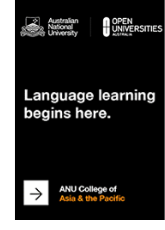With trust in intelligence agencies eroding and the public suspicious of their role, ASIO should take to social media to connect with the community, Alex Szokalski writes.
The Australian Security Intelligence Organisation (ASIO), is the Australian Government’s domestic intelligence organisation. For the most part, ASIO operates in the background of everyday life, aiming to keep Australia and its citizens safe.
ASIO’s stated mission is to protect Australia and its people from terrorism, espionage, foreign interference, and threats to border security, and to advise the Australian governments on matters of national security.
Unfortunately, intelligence organisations such as ASIO are often the focus of conspiracy theories and are perceived as deeply untrustworthy by some. Along with the fact that the Snowden leaks permanently damaged trust in intelligence agencies, the mainstream media often portray them in an unrealistic light, such as in action or spy films.
In big Hollywood films, oversight is rarely touched on, possibly because it would not make exciting viewing. To the keen eye though, the Inspector General of Intelligence and Security did play a small part in the Australian spy drama Secret City.
The reality, as Secret City reflects with this inclusion, is that there are numerous checks and balances on how Australian Intelligence agencies behave, both in the form of oversight bodies and legislation.
The Parliamentary Joint Committee on Intelligence and Security and the Intelligence Services Act were both established for this specific purpose. Their existence is testament to the fact that Australia’s intelligence bodies do not operate with free reign.
Showing this to the public, and combating the negative perception that surrounds intelligence is important, and the fostering of a social media presence could have a number of positive benefits for the organisation.
In order to dispel negative perceptions, it would serve ASIO well to have a social media presence, particularly on Facebook. Numerous American intelligence agencies host verified pages on Facebook, allowing the public easy access to important information.
The Central Intelligence Agency (CIA) Facebook page, for instance, hosts its mission statement and contact details, provides historical agency information, showcases workplace profiles, and, perhaps surprisingly, advertises career opportunities.
Similar information about ASIO can be found on ASIO’s website and via its annual reports, but it is not exactly front and centre. Each annual report is very detailed and provides a great deal of information about organisational structure, history and purpose, and what the agency has achieved. Yet, the audience it will reach is limited, as it is buried in a low-traffic website rather than on social media.
S ocial media has grown exponentially since its inception. Facebook, for instance, has become the single most popular means of engagement amongst all generations. If ASIO were to establish a social media team, tasked with putting similar information from their annual report, in a stylised and visually striking manner on Facebook, they would reach a much wider audience.
ocial media has grown exponentially since its inception. Facebook, for instance, has become the single most popular means of engagement amongst all generations. If ASIO were to establish a social media team, tasked with putting similar information from their annual report, in a stylised and visually striking manner on Facebook, they would reach a much wider audience.
This way, ASIO’s achievements, the benefit of their operations, and the means by which they are regulated could be more succinctly and effectively communicated to the wider Australian community. It could also help to dispel the myth that ASIO is a tightly closed agency that withholds information from the public, and could even attract more people to its recruitment drives.
Undoubtedly, there will be naysayers. Trolls may target the Facebook page, as can be seen on the CIA’s page, but the small number of negative comments is outweighed by the CIA’s more than 900,000 followers, which the agency can provide information to and who often react positively. The benefits are clear, and if the CIA can have a social media presence, why can’t ASIO?





 Social or anti-social media?
Social or anti-social media?
 Essential liberty
Essential liberty